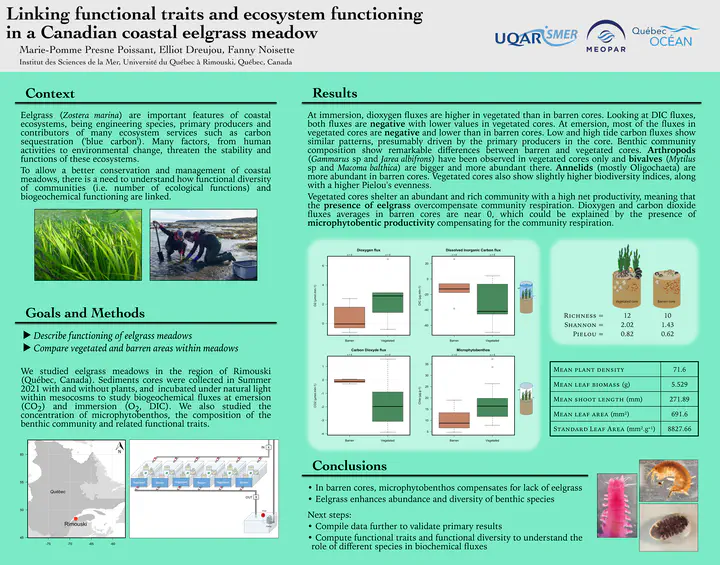Linking functional traits and ecosystem functioning in a Canadian coastal eelgrass meadow

Abstract
Eelgrass are important features of coastal ecosystems, being engineering species, primary producers and contributors of many ecosystem services such as carbon sequestration (‘blue carbon’). Many factors, from human activities to environmental change, threaten the stability and functions of these ecosystems. We studied how functional diversity of communities and biogeochemical functioning of eelgrass meadows are linked. A biodiversity and ecosystem functioning approach (BEF) was applied on the eelgrass meadows in the region of Rimouski (QC, Canada). Cores of sediment were collected with and without plants in Summer 2021 and incubated within mesocosms, where we sampled morphological and biological variables of eelgrass meadows (e.g. photosynthetic efficiency, shoot density, biomass, production, respiration). We also identified associated benthic species and computed functional diversity indices. While vegetated cores showed correlations between productivity and functional traits in eelgrass meadows, non-vegetated cores displayed some net productivity, highlighting the role of other primary producers within fine sediments. This research enhances the understanding of coastal ecosystem functioning and paves the way towards relevant conservation strategies and robust ecological status prediction.